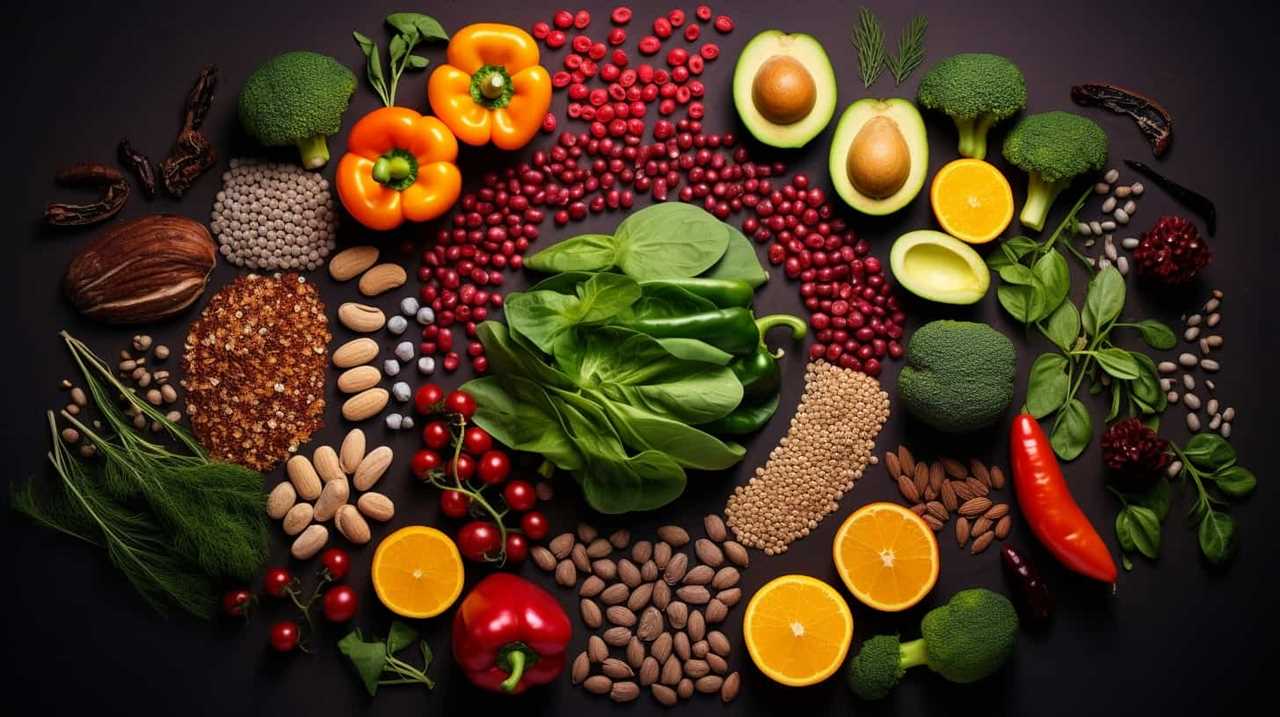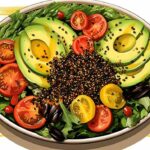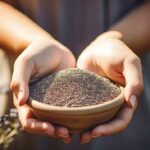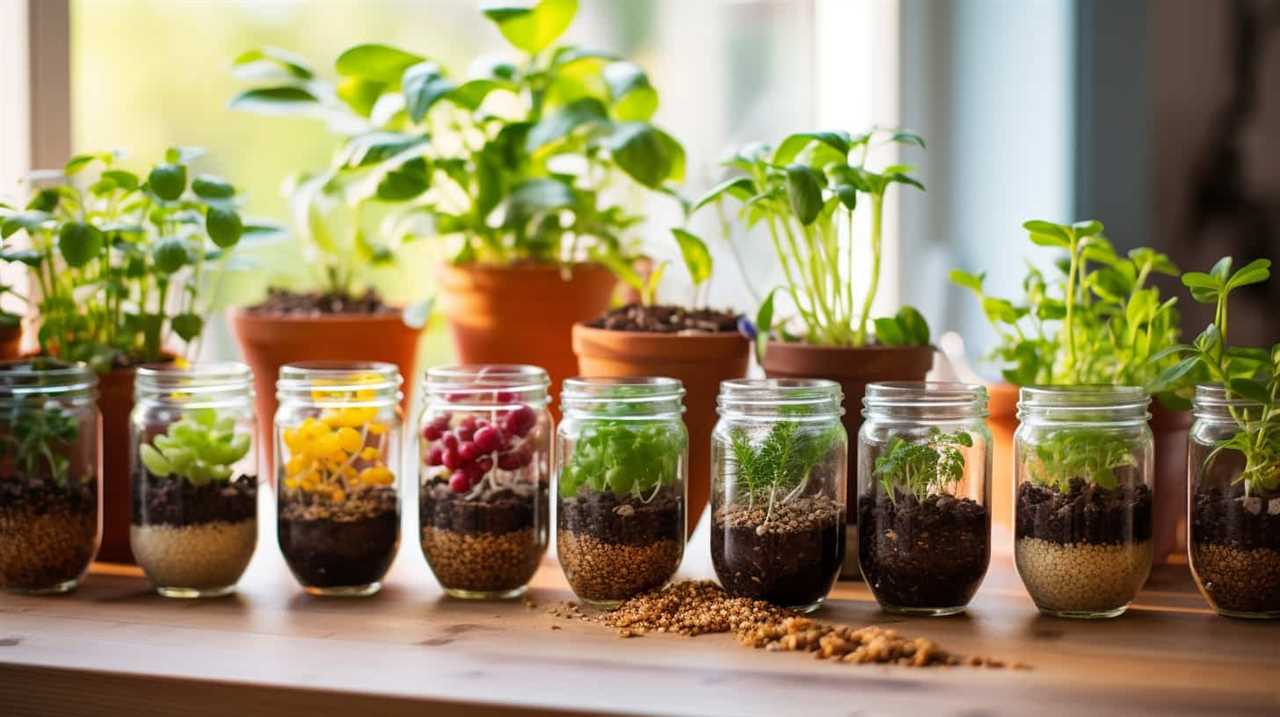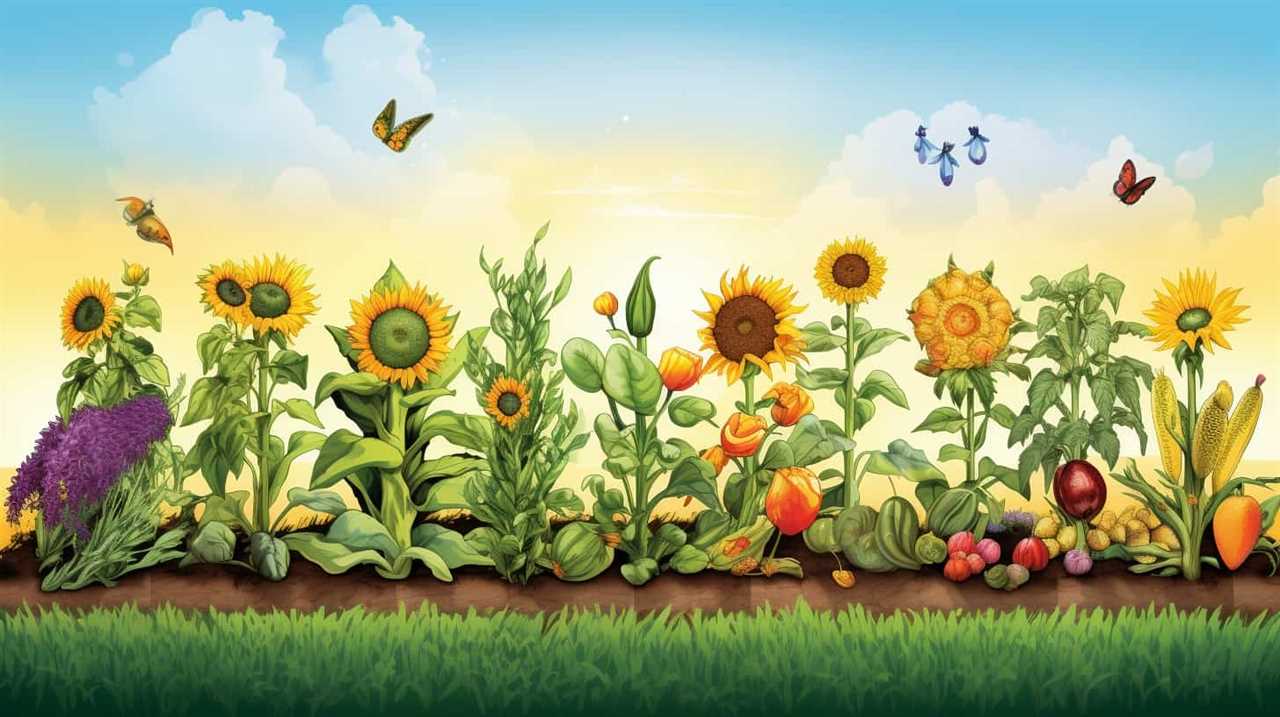Are you ready to start a successful journey in growing chia seeds?
We’ve got you covered with our 10 tips for thriving chia plants.
From choosing the right climate to storing your precious seeds, we’ve gathered practical advice to ensure a bountiful harvest.
With our help, you’ll understand the different seed varieties, prepare the soil like a pro, and keep those pesky weeds and pests at bay.
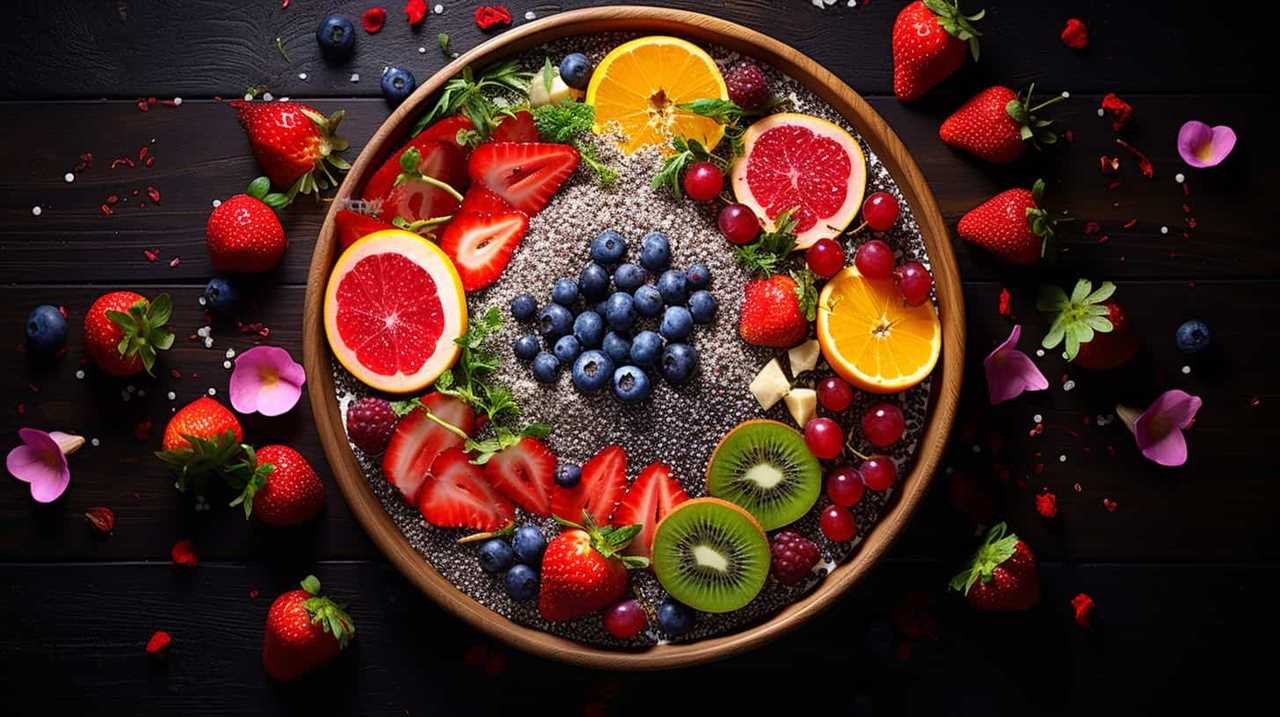
Let’s dive in and cultivate chia seeds like never before!
Key Takeaways
- Chia seeds thrive in a moderate temperature range of 60°F to 75°F (15°C to 24°C) and are sensitive to extreme temperatures.
- Adequate moisture and well-drained soil with a pH level between 6.0 and 8.0 are essential for the germination and development of chia plants.
- Chia seeds come in different varieties with distinct flavor profiles, such as nutty (black chia), mild (white chia), and light (golden chia).
- Proper soil preparation, including conducting a soil test, adding organic matter, and ensuring good drainage, is crucial for successful chia seed cultivation.
Choosing the Right Climate
When choosing the right climate for successful chia seeds cultivation seasons, it’s important to consider the specific requirements of this crop.
Chia seeds thrive in a climate with a moderate temperature range. The ideal temperature for chia seeds cultivation is between 60°F and 75°F (15°C and 24°C). This temperature range provides the optimal conditions for germination and growth. Chia seeds are sensitive to extreme temperatures, so it’s crucial to avoid exposing them to frost or excessive heat.
Additionally, chia seeds require a climate with a suitable amount of rainfall or irrigation. Adequate moisture is essential for the germination and development of chia plants.
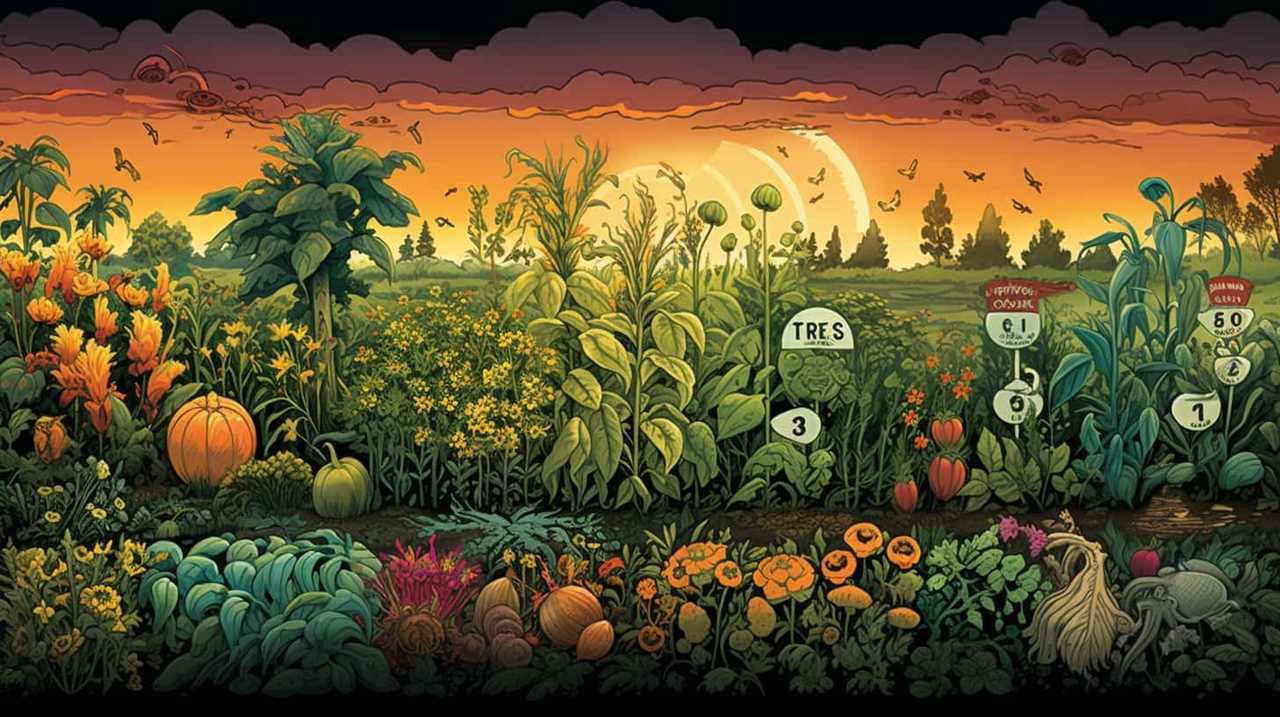
It’s also important to consider the length of the growing season when choosing a climate for chia seeds cultivation. Chia seeds typically require a growing season of approximately 100 to 120 days to reach maturity.
Understanding Chia Seed Varieties
When it comes to understanding chia seed varieties, it’s important to consider their flavor profiles and ideal growing conditions.
Different chia seed varieties have distinct flavor profiles, ranging from mild and nutty to bold and earthy. Understanding these flavor profiles can help growers select the right variety for their desired culinary applications.
Additionally, each chia seed variety thrives under specific growing conditions, such as temperature, soil type, and sunlight exposure. By understanding these ideal growing conditions, growers can maximize the yield and quality of their chia seed crops.
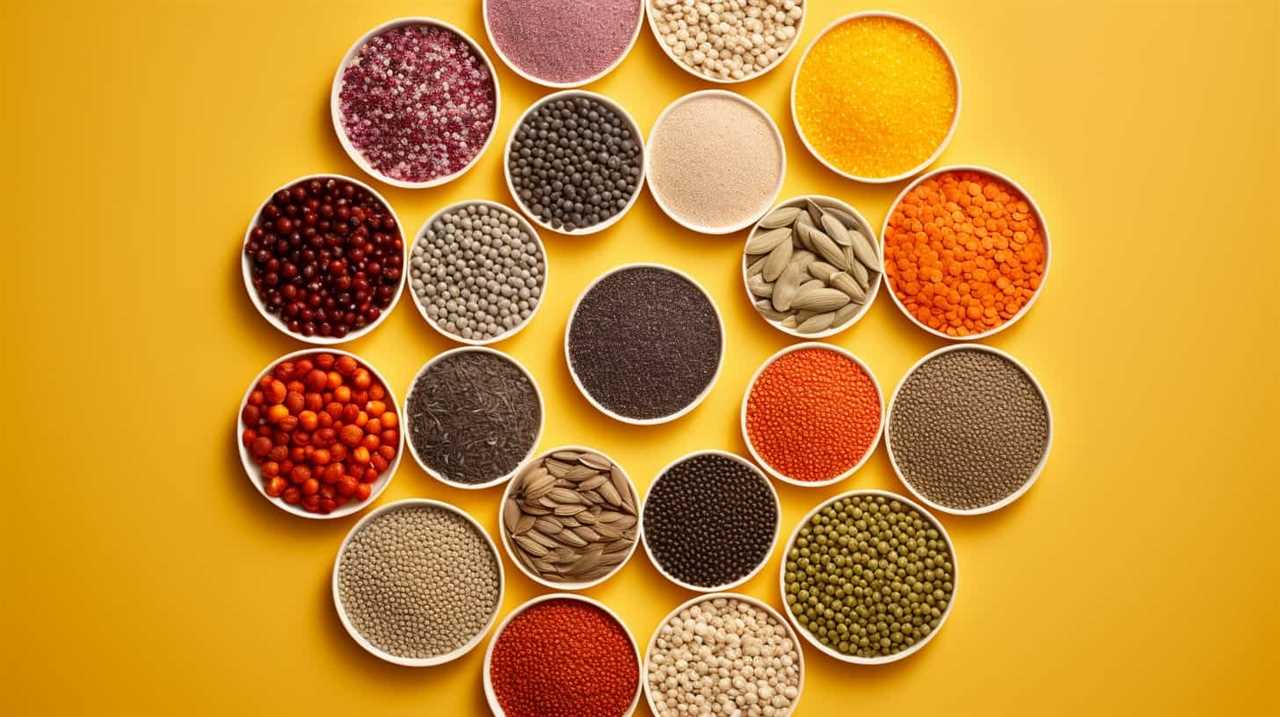
Seed Flavor Profiles
To truly understand the diversity of chia seed varieties, we must delve into their distinct flavor profiles. Chia seeds come in different varieties, each with its own unique taste and culinary uses. Let’s explore some of the most popular chia seed varieties and their flavor preferences:
| Chia Seed Variety | Flavor Profile | Culinary Uses |
|---|---|---|
| Black Chia | Nutty | Baking, smoothies, salads |
| White Chia | Mild | Puddings, yogurt, sauces |
| Golden Chia | Light and mild | Breads, granola, energy bars |
| Red Chia | Earthy | Soups, stews, dressings |
| Multicolored Chia | Blend of flavors | Toppings, garnishes, snacks |
Understanding these flavor profiles allows us to choose the right chia seed variety for our culinary creations. Now that we have explored the diverse flavors of chia seeds, let’s move on to understanding the ideal growing conditions for successful cultivation.
Ideal Growing Conditions
Now that we’ve explored the diverse flavors of chia seeds, let’s delve into the ideal growing conditions for successful cultivation.
When it comes to choosing a suitable environment for chia seed cultivation, there are a few key factors to consider in order to maximize yield potential:
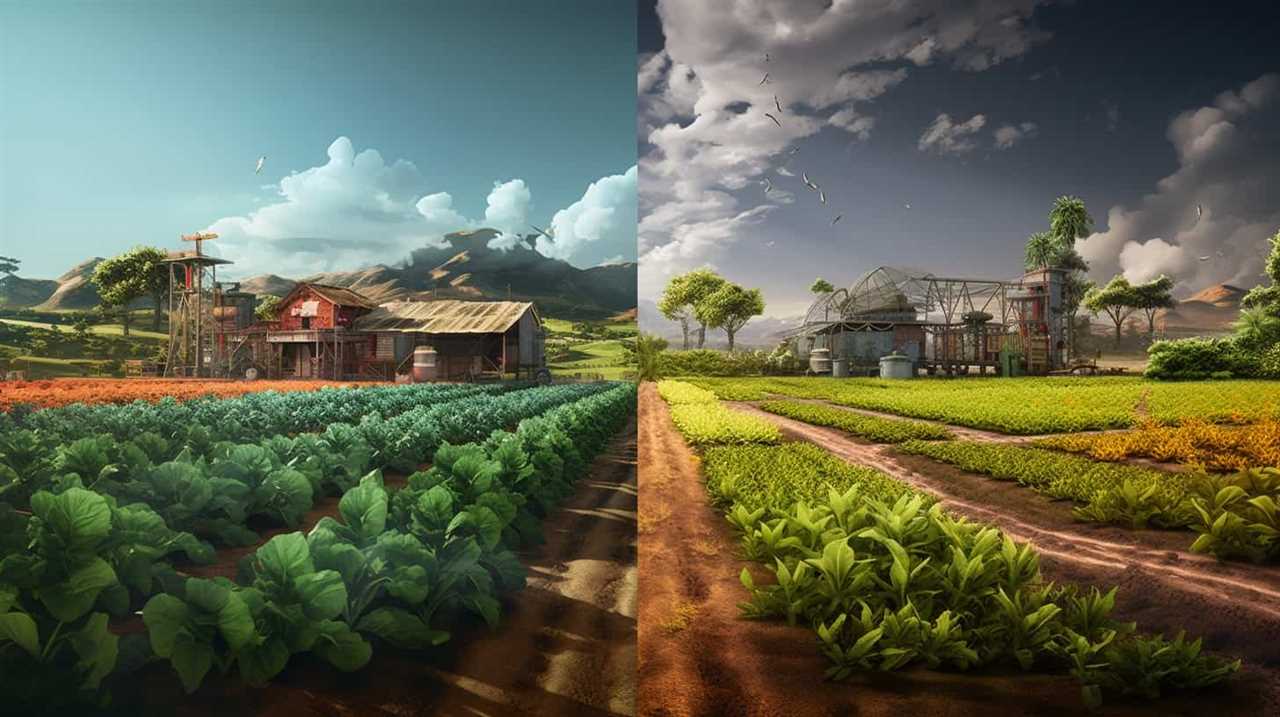
-
Climate: Chia seeds thrive in regions with a Mediterranean climate, characterized by mild winters and hot, dry summers. They require a minimum temperature of 60°F (15°C) for germination and optimal growth.
-
Soil: Chia seeds prefer well-drained soil with a pH level between 6.0 and 8.0. Sandy loam or loamy soils are ideal, as they provide good drainage and nutrient retention.
-
Sunlight: Chia plants require full sun exposure, meaning they should receive at least 6-8 hours of direct sunlight per day. This ensures optimal growth and development.
-
Watering: Chia seeds are drought-tolerant but still require regular watering, especially during the germination and flowering stages. It’s important to provide sufficient moisture without overwatering, as excessive moisture can lead to root rot.
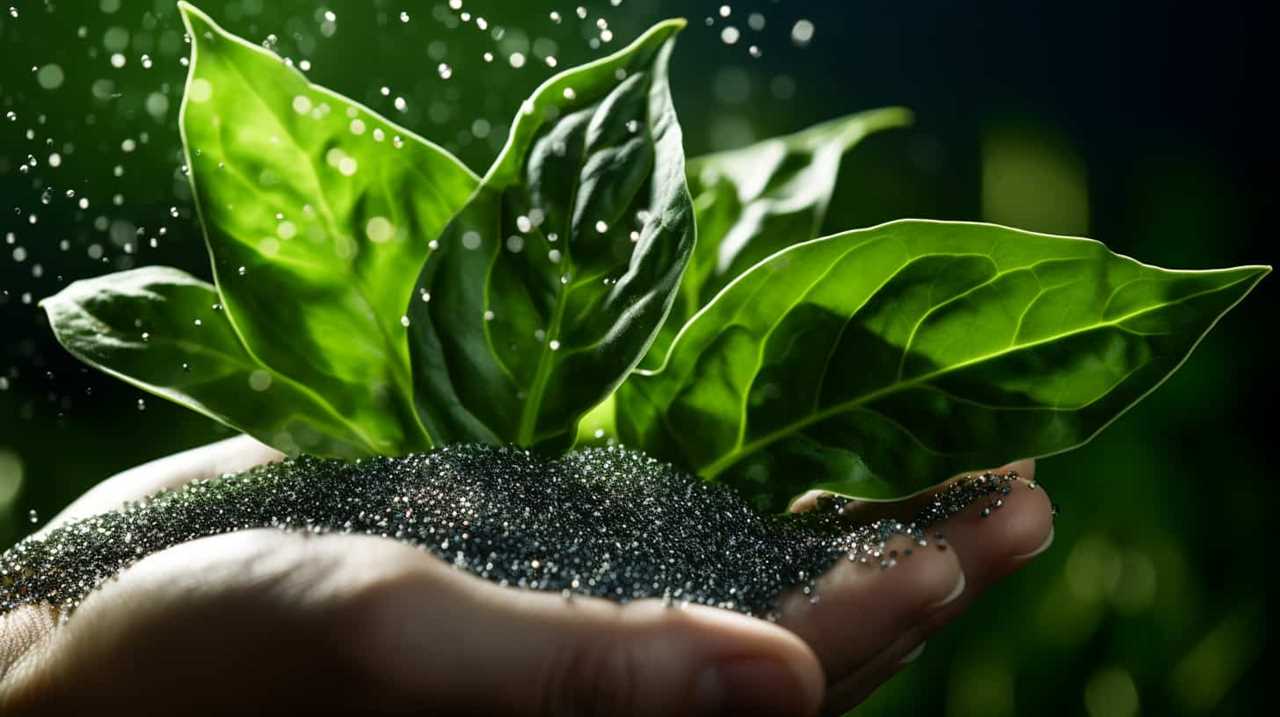
Now that we understand the ideal growing conditions for chia seeds, let’s move on to the next step: preparing the soil for planting.
Preparing the Soil for Planting
Before planting chia seeds, it’s crucial to prepare the soil properly. The first step is to determine the soil composition requirements by conducting a soil test to assess its nutrient content and pH level.
Based on the test results, adjustments can be made by adding organic matter such as compost or well-rotted manure to improve soil fertility and structure.
Soil Composition Requirements
Proper soil composition is essential for successful chia seeds cultivation seasons. Before planting chia seeds, it’s important to analyze the soil composition to determine its fertility and make necessary improvements. Here are four key requirements for soil composition:
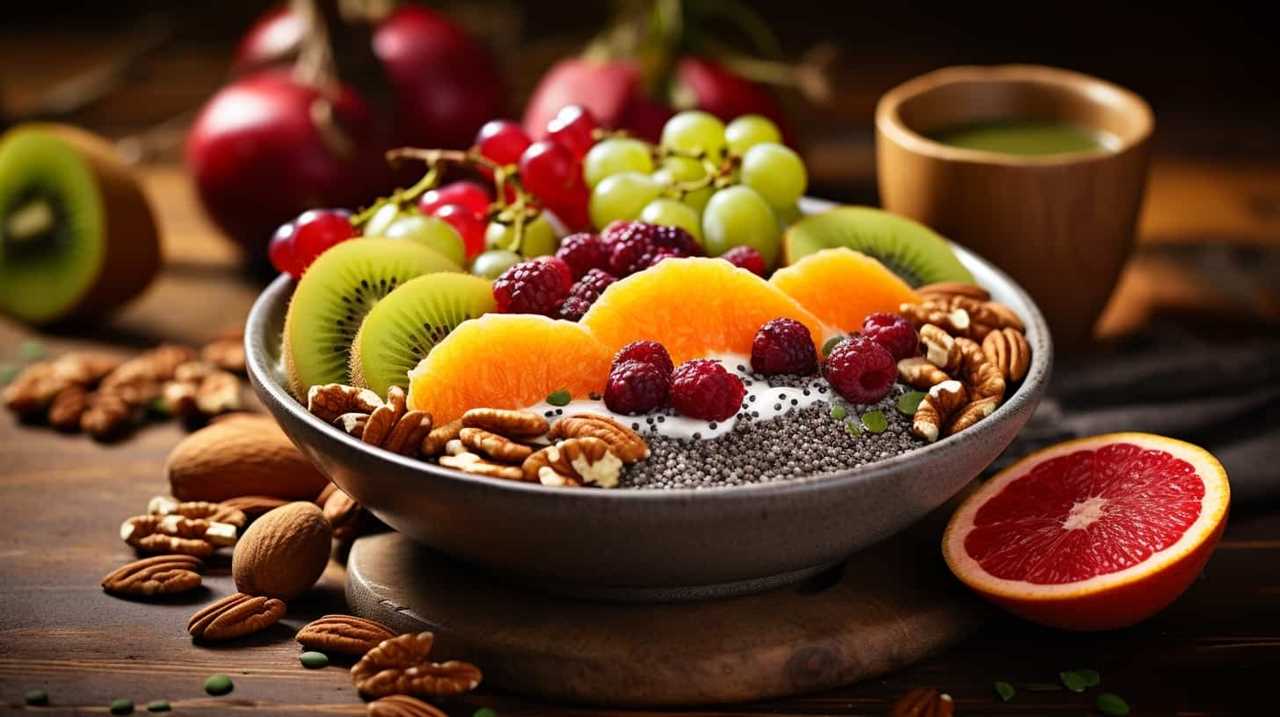
-
Nutrient-rich soil: Chia plants require a well-balanced supply of nutrients, including nitrogen, phosphorous, and potassium. Conduct soil tests to determine the nutrient levels and adjust accordingly.
-
Well-draining soil: Chia seeds prefer well-draining soil to prevent waterlogged conditions that can lead to root rot. Ensure the soil has good drainage by adding organic matter like compost or peat moss.
-
pH level: Chia plants thrive in a slightly acidic to neutral soil pH range of 6.0 to 7.5. Adjust the pH level if necessary using lime to raise it or sulfur to lower it.
-
Texture: Chia seeds prefer loamy soil with a balanced texture that allows for proper root growth and water retention. Improve soil texture by adding organic matter such as compost or aged manure.
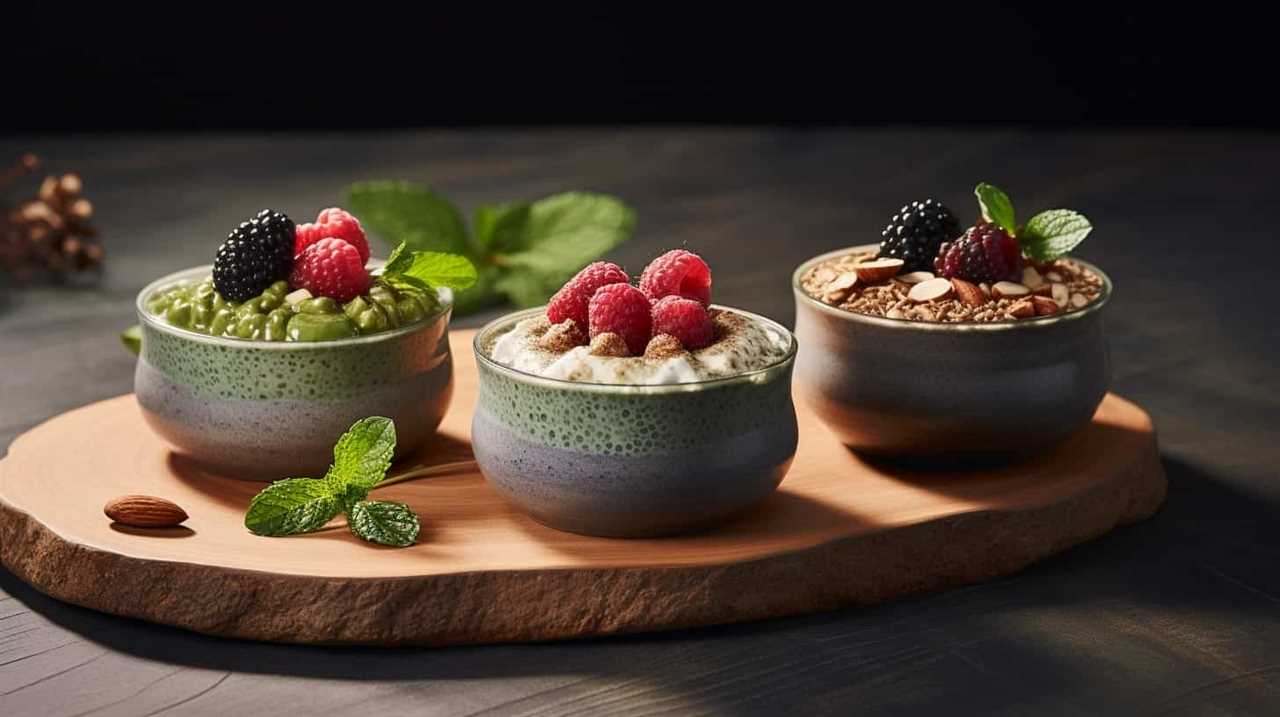
Testing Soil Ph
To begin preparing the soil for planting chia seeds, we need to test the soil pH. Testing soil pH is crucial as it helps determine the acidity or alkalinity of the soil, which affects the availability of nutrients to the plants. It’s recommended to use a soil testing kit or send a sample to a laboratory for analysis.
The test results will provide valuable information about the soil’s fertility and composition, allowing us to make informed decisions regarding nutrient management. By analyzing the soil composition and pH, we can identify any deficiencies or excesses that may hinder chia seed growth.
Once we have a clear understanding of the soil’s pH, we can proceed to the next step of adding organic matter to improve soil fertility and create an optimal environment for chia seed cultivation.
Adding Organic Matter
After testing the soil pH, we can now move on to adding organic matter to prepare the soil for planting chia seeds. Adding organic matter is crucial for improving soil fertility, structure, and nutrient availability.
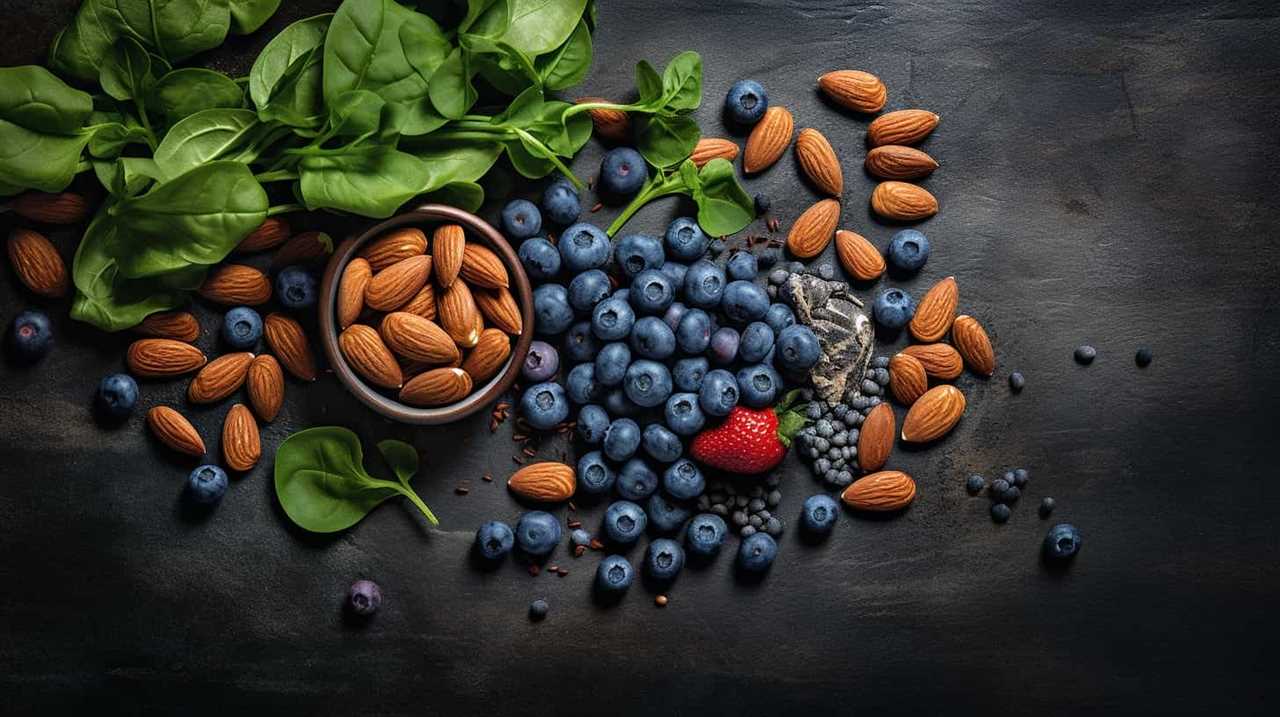
Here are some important points to consider:
-
Importance of composting: Composting is a natural process that converts organic materials, such as kitchen scraps, yard waste, and manure, into nutrient-rich compost. This compost can then be added to the soil to enhance its fertility and provide a steady supply of essential nutrients.
-
Organic fertilizers: Using organic fertilizers, such as bone meal, fish emulsion, or seaweed extract, can help replenish nutrients in the soil. These fertilizers are derived from natural sources and provide a slow-release of nutrients, ensuring long-term plant health.
-
Organic amendments: Incorporating organic amendments, such as peat moss, coconut coir, or aged manure, can improve soil structure and water-holding capacity. These amendments also provide beneficial microorganisms that promote soil health and plant growth.
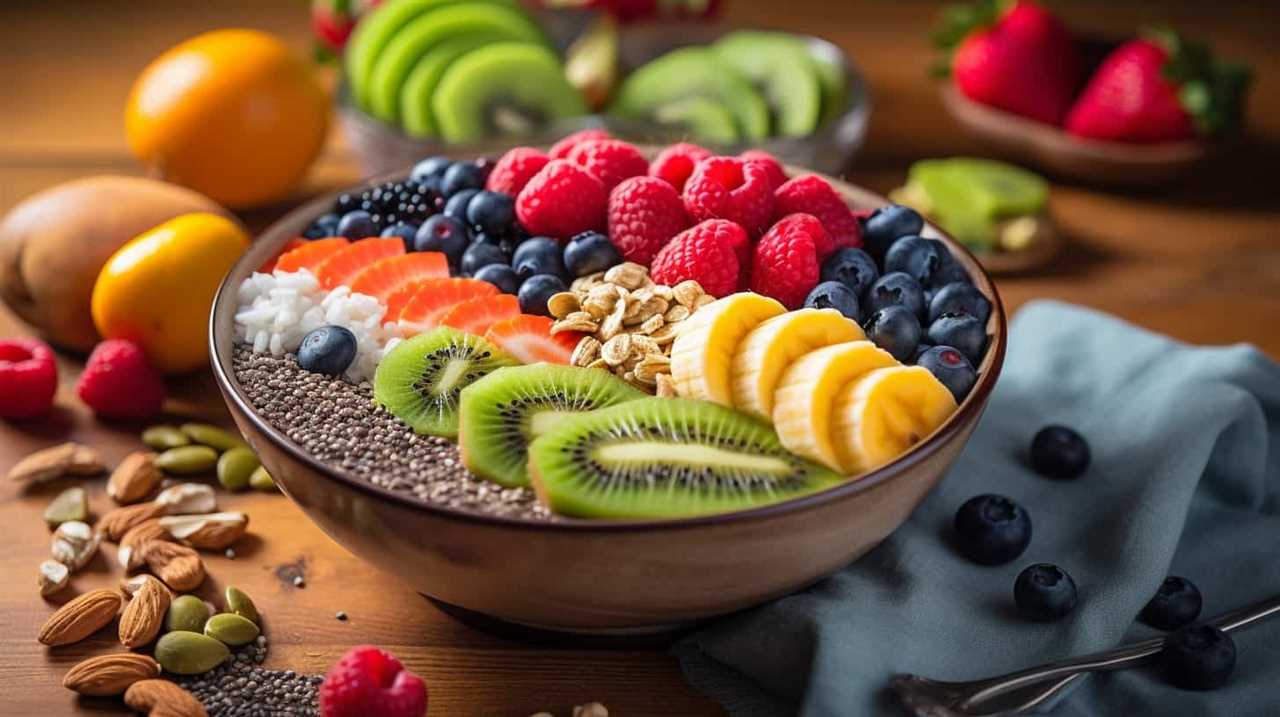
-
Mulching: Applying a layer of organic mulch, such as straw or wood chips, around chia seedlings can help conserve moisture, suppress weeds, and regulate soil temperature.
Sowing Chia Seeds at the Right Time
We sow chia seeds during the optimal time in order to ensure successful cultivation. Choosing the appropriate soil is crucial for chia seed germination. Chia seeds require well-draining soil with a pH level between 6 and 7. Sandy loam or loamy soil is ideal for chia cultivation. To further assist you in understanding the importance of sowing chia seeds at the right time, we have provided a table below:
| Month | Temperature (°C) | Soil Moisture Level | Daylight Hours |
|---|---|---|---|
| March | 20-25 | Moderate | 12-14 |
| April | 25-30 | Moderate | 14-16 |
| May | 30-35 | Dry | 16-18 |
| June | 35-40 | Dry | 18-20 |
As you can see, the best time to sow chia seeds is during March and April when the temperature is favorable, and soil moisture levels are moderate. This will provide the optimum conditions for chia seed germination.
In the next section, we will discuss the importance of providing adequate watering and drainage for successful chia cultivation.
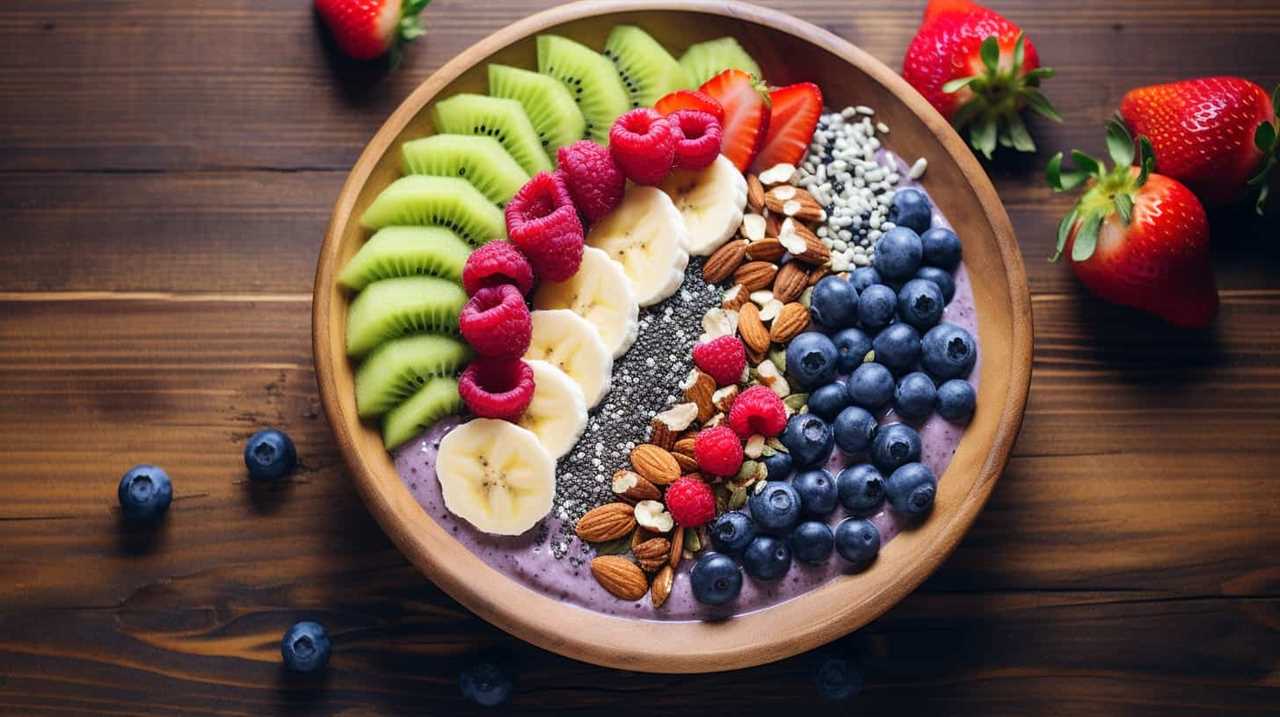
Providing Adequate Watering and Drainage
When it comes to successful chia seeds cultivation, providing adequate watering and drainage is crucial.
We need to pay attention to both the frequency and duration of watering to ensure the plants receive enough moisture without being overwatered.
Additionally, proper drainage is essential to prevent waterlogging and root rot, which can negatively impact the growth and health of the chia plants.
Watering Frequency and Duration
For successful chia seeds cultivation seasons, it’s crucial to ensure a consistent and appropriate watering schedule, providing the right amount of water and ensuring proper drainage. Proper watering techniques and irrigation methods are essential for the optimal growth of chia plants. Here are some tips to help you establish a successful watering routine:
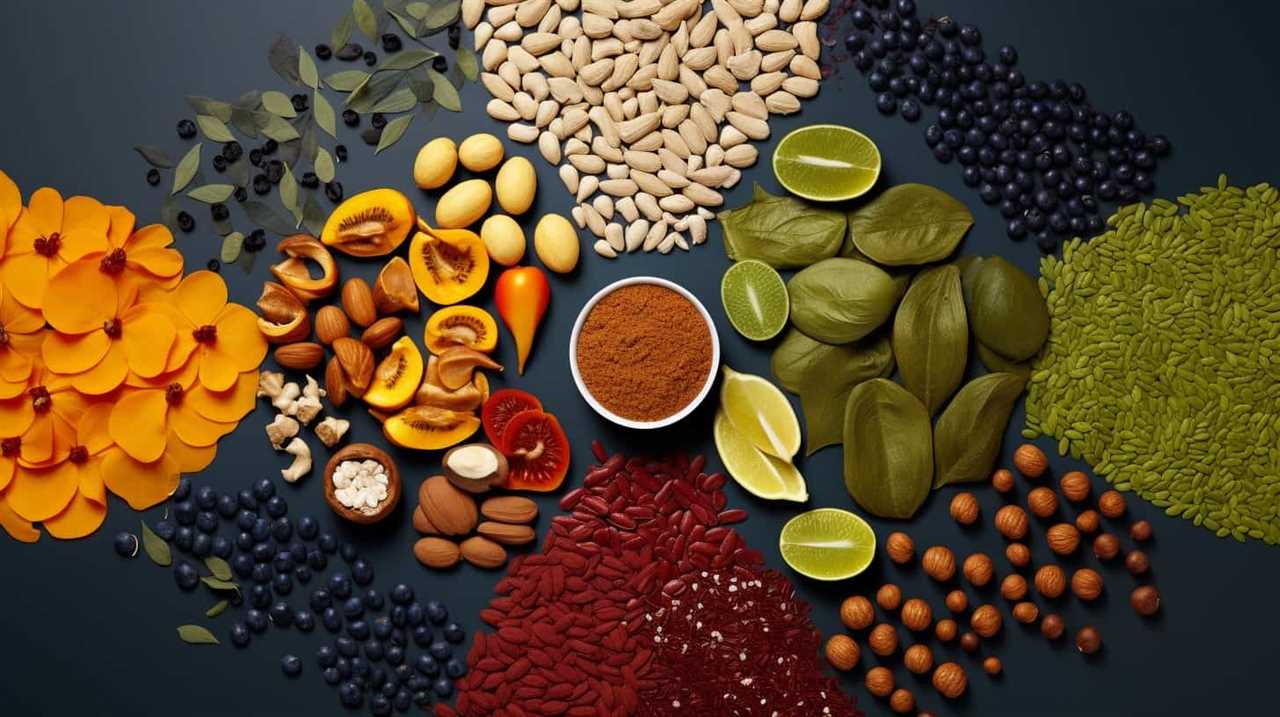
- Water the chia plants deeply and evenly to encourage root development.
- Monitor the soil moisture regularly to avoid over or under watering.
- Adjust the watering frequency based on the weather conditions, taking into account factors such as temperature and rainfall.
- Consider using drip irrigation or soaker hoses to provide a slow and steady water supply directly to the roots.
Ensuring the proper watering frequency and duration is crucial for the healthy growth of chia seeds.
However, it’s equally important to understand the importance of proper drainage, which we’ll discuss in the next section.
Importance of Proper Drainage
Proper drainage is a crucial aspect of successful chia seeds cultivation seasons, ensuring adequate watering and preventing waterlogged soil. To achieve optimal drainage, proper soil preparation and the implementation of the best drainage techniques are essential. Here are some practical tips to help you create an ideal growing environment for your chia seeds:
| Soil Preparation | Best Drainage Techniques |
|---|---|
| Loosen the soil | Install drainage pipes |
| Add organic matter | Create raised beds |
| Avoid compacted soil | Use gravel or pebbles |
Loosening the soil allows for better water infiltration and root penetration, while adding organic matter improves soil structure and drainage capacity. Avoid compacted soil, as it hinders water movement. Installing drainage pipes or creating raised beds helps excess water to flow away from the plants’ root zone. Using gravel or pebbles in the soil also promotes better drainage. By following these techniques, you can ensure that your chia seeds receive adequate water without the risk of waterlogging, leading to a successful cultivation season.
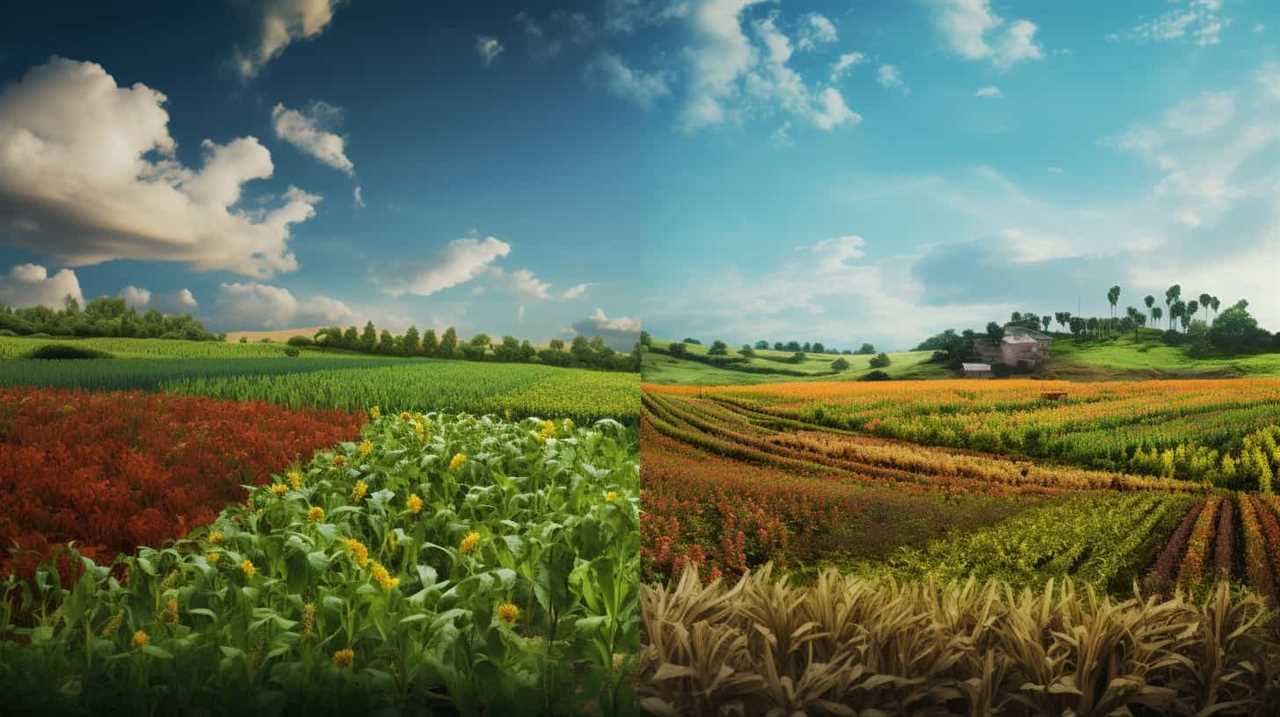
Proper Nutrient Management
To ensure optimal growth and yield of chia seeds, we must carefully manage the nutrients throughout the cultivation season. Proper nutrient management is essential for nutrient deficiency prevention and nutrient absorption optimization. Here are four key points to consider:
-
Soil Testing: Conduct regular soil tests to determine the nutrient levels and pH. This will help identify any deficiencies or imbalances in the soil, allowing you to adjust the fertilizer application accordingly.
-
Fertilizer Application: Apply fertilizers based on the soil test results and the specific nutrient requirements of chia plants. Use organic fertilizers that provide a balanced mix of macro and micronutrients.
-
Timing and Frequency: Distribute the fertilizers evenly and at the right time to ensure continuous nutrient availability throughout the growing season. Consider using slow-release fertilizers to provide a steady supply of nutrients over a longer period.
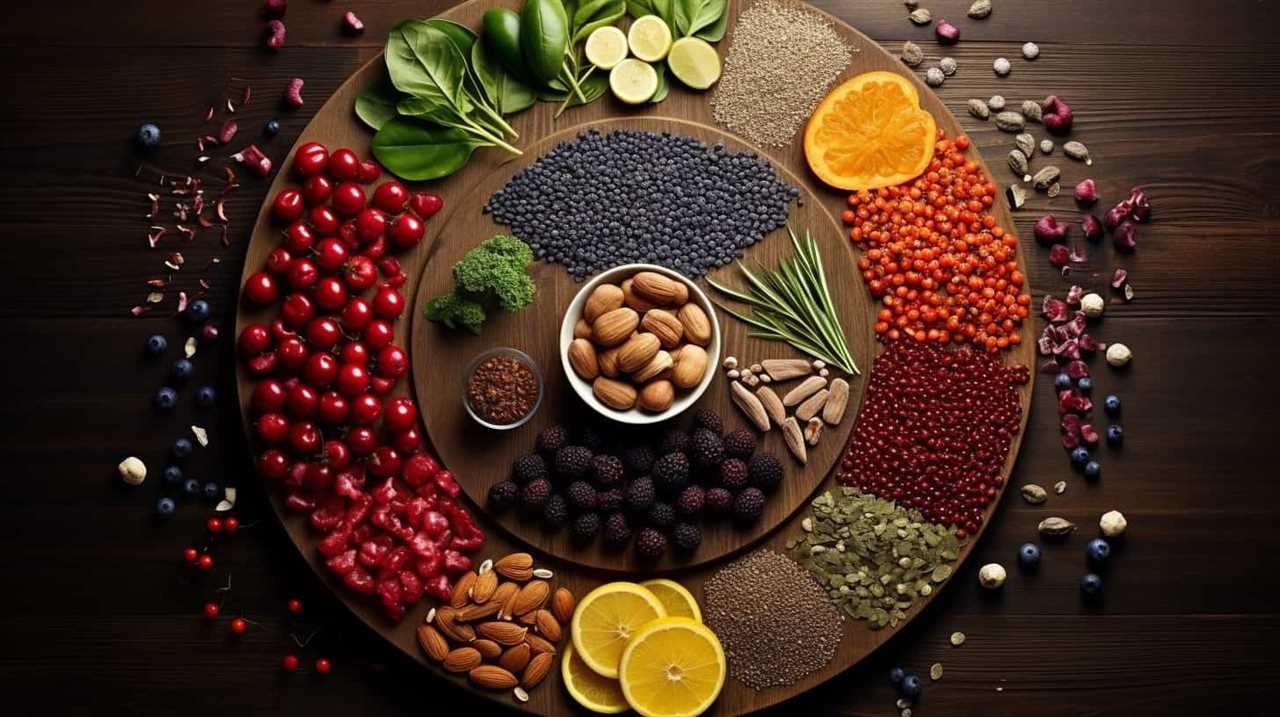
-
Irrigation Management: Proper irrigation scheduling is crucial to prevent nutrient leaching and ensure efficient nutrient uptake by the plants. Monitor soil moisture levels and adjust irrigation accordingly.
By implementing these nutrient management practices, you can provide the chia plants with the necessary nutrients for healthy growth and maximum yield.
Now, let’s move on to the next section, where we’ll discuss controlling weeds and pests.
Controlling Weeds and Pests
After implementing proper nutrient management practices, we can now focus on effectively controlling weeds and pests during the chia seeds cultivation season.
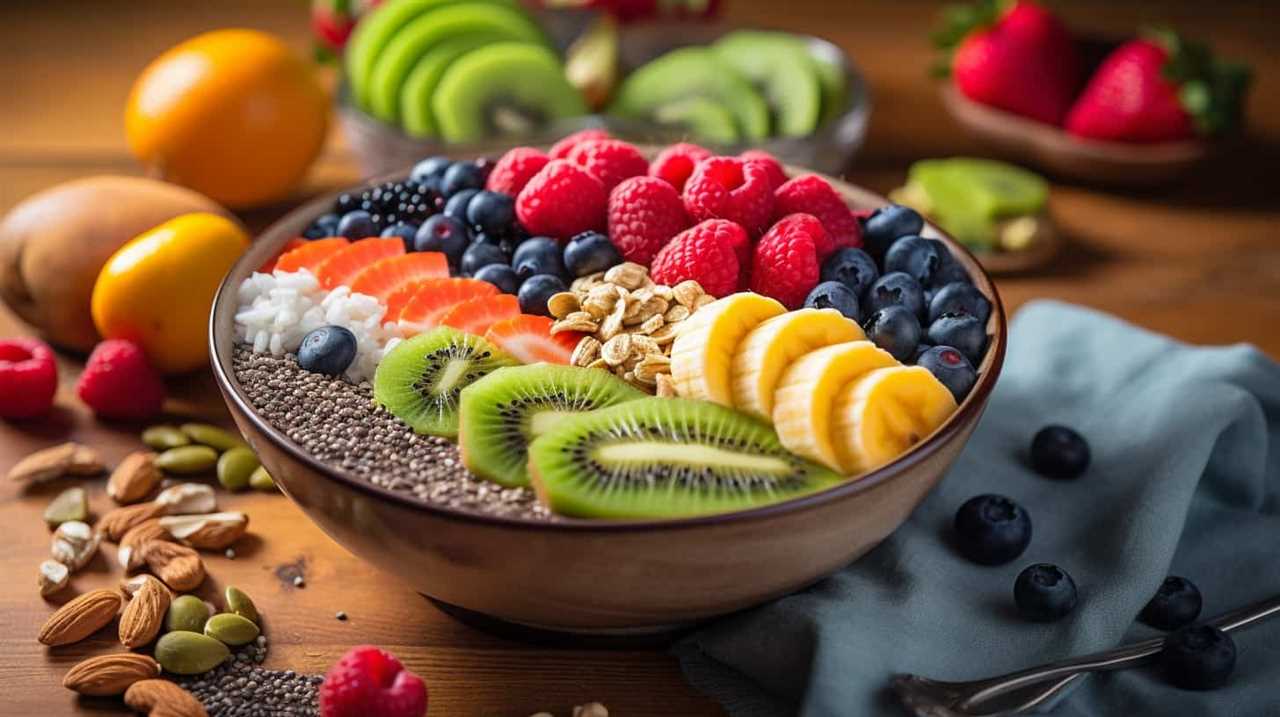
Weed management is crucial to ensure the healthy growth and development of chia plants. Regularly inspect the field for weed growth and remove them manually or by using appropriate herbicides. Mulching can also be an effective method to control weeds by preventing their germination and growth.
When it comes to pest control, it’s important to identify the specific pests that pose a threat to chia plants. Implement integrated pest management strategies that involve cultural, biological, and chemical methods to control pests. Monitor the field regularly and take necessary actions such as insecticide application, crop rotation, and trap cropping to minimize pest damage.
Monitoring Chia Plant Growth
Now, let’s shift our focus to monitoring the growth of chia plants during the cultivation season. It’s essential to closely observe the progress of your chia plants to ensure their health and productivity. Here are some key points to consider when monitoring chia plant growth:
- Regularly measure the height of the plants to track their growth progress over time.
- Observe the color and appearance of the leaves, as discoloration or wilting may indicate nutrient deficiencies.
- Keep an eye out for any signs of pests or diseases, such as chewed leaves or unusual spots, and take immediate action if necessary.
- Conduct soil tests periodically to identify any nutrient deficiencies that may affect the growth of your chia plants.
Harvesting Chia Seeds at the Right Maturity
When harvesting chia seeds at the right maturity, we must carefully assess the color and texture of the seed heads. The seed heads should have turned a brownish color and the capsules should be dry and brittle to the touch.
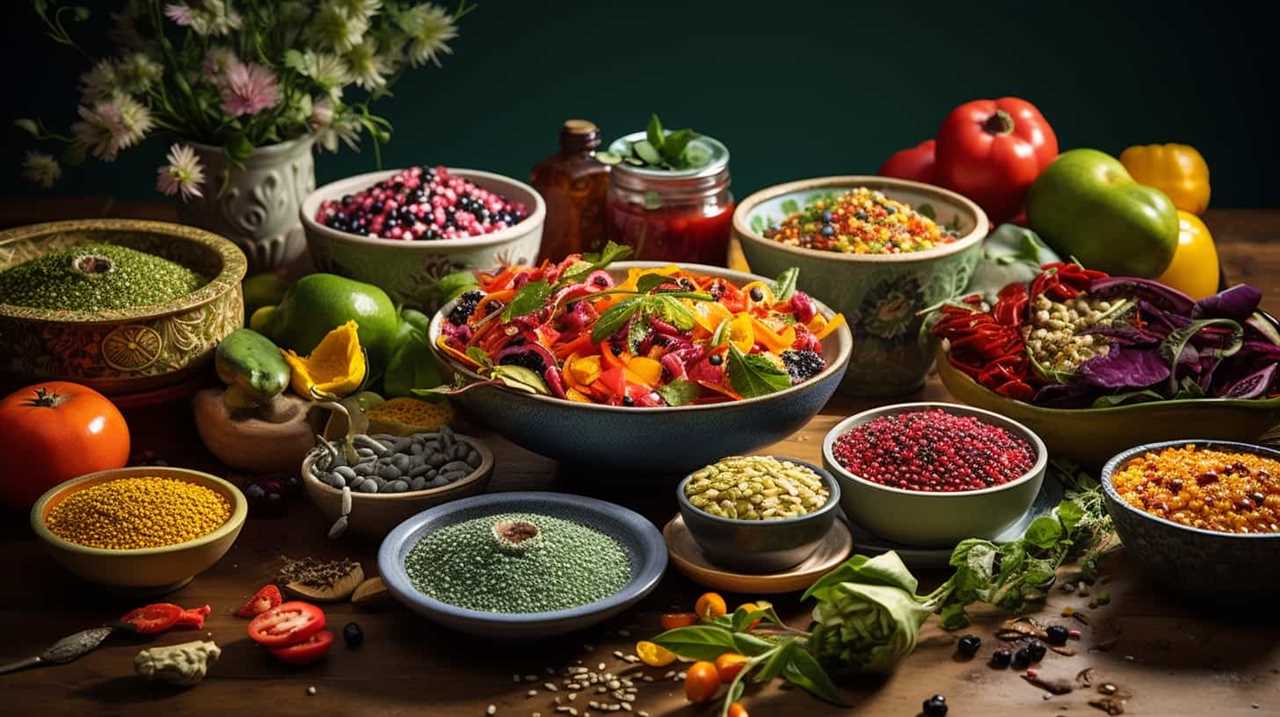
To begin the harvest, it’s important to choose the right harvesting tools. A sickle or sharp blade is ideal for cutting the seed heads close to the base of the plant without damaging the seeds.
After the chia seed heads have been harvested, it’s crucial to employ proper post-harvest processing techniques. This includes threshing the seed heads to separate the seeds from the rest of the plant material and then using a screen or sieve to remove any remaining debris.
These steps ensure that the chia seeds are collected at their peak maturity and are ready for further processing or storage.
Storing Chia Seeds for Longevity
To ensure the longevity of chia seeds, we must carefully consider the storage conditions and methods. Properly storing chia seeds is crucial to maintain their nutritional value and increase their shelf life.
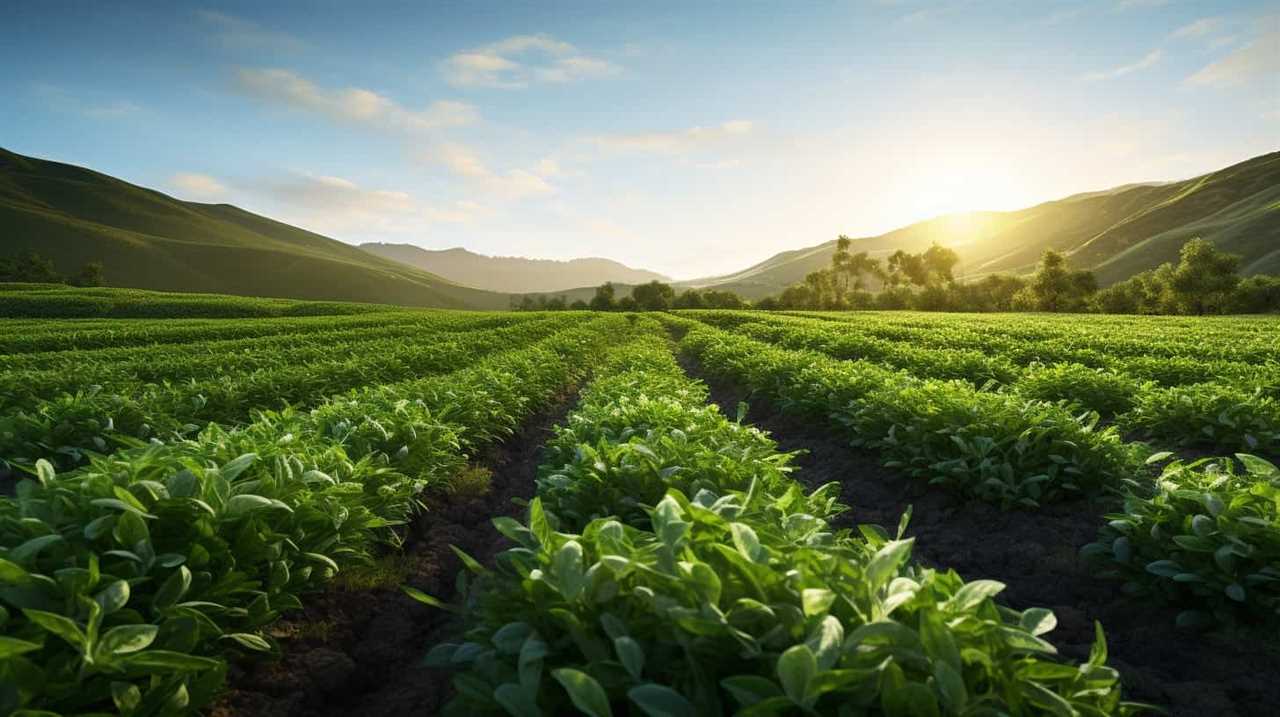
Here are some practical tips for storing chia seeds:
- Keep chia seeds in an airtight container to protect them from moisture and air exposure.
- Store chia seeds in a cool, dry place away from direct sunlight to prevent spoilage.
- Avoid storing chia seeds near strong odors as they can absorb these flavors.
- Regularly check the storage container for any signs of mold or pests and discard any contaminated seeds.
Frequently Asked Questions
How Can I Prevent Birds From Eating My Chia Seeds While They Are Still Growing?
To prevent birds from damaging chia seedlings, we can use protective covers like nets or cages. These physical barriers create a barrier between the birds and the seeds, ensuring successful cultivation.
Are There Any Specific Diseases or Pests That Commonly Affect Chia Plants, and How Can I Prevent or Treat Them?
To prevent chia plant diseases and treat pests, we recommend regular scouting for signs of infestation, using organic pesticides if necessary, and implementing crop rotation to minimize the risk of diseases.
Can Chia Plants Be Grown in Containers or Pots, or Do They Require a Large Garden Space?
Chia plants can be grown in containers or pots, making them suitable for small spaces. They don’t require a large garden area. Container gardening allows for flexibility and easy maintenance, making it a practical choice for chia cultivation.
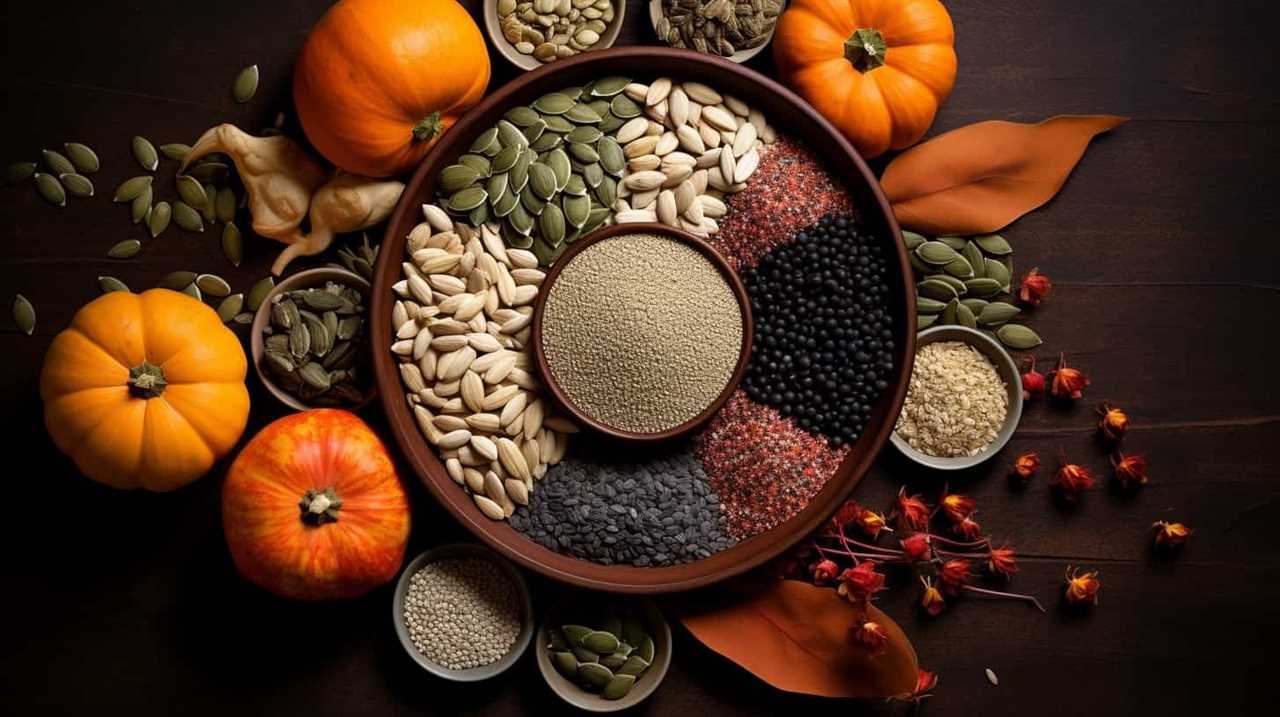
Is It Possible to Grow Chia Seeds Indoors, and if So, What Are the Necessary Conditions and Equipment?
Indoor cultivation of chia seeds is possible with the right conditions and equipment. To prevent bird damage, use netting or scare devices. Managing diseases and pests may require organic pesticides. Container gardening allows for easy maintenance. Harvesting techniques vary based on plant maturity.
Are There Any Specific Techniques or Tips for Harvesting Chia Seeds to Ensure the Highest Quality and Yield?
To ensure high quality and high yield chia seed harvests, we recommend following these tips for harvesting chia seeds: proper timing, dry weather, proper equipment, gentle handling, and storing in a cool, dry place.
Conclusion
In conclusion, cultivating chia seeds requires careful attention to factors such as climate, seed varieties, soil preparation, timing, watering, weed control, and pest management.
Monitoring the growth of chia plants and harvesting the seeds at the right maturity are crucial for a successful cultivation season.

Lastly, storing the chia seeds properly will ensure their longevity.
Just like tending to a garden, cultivating chia seeds requires patience, precision, and a touch of green thumb.
Happy gardening!

